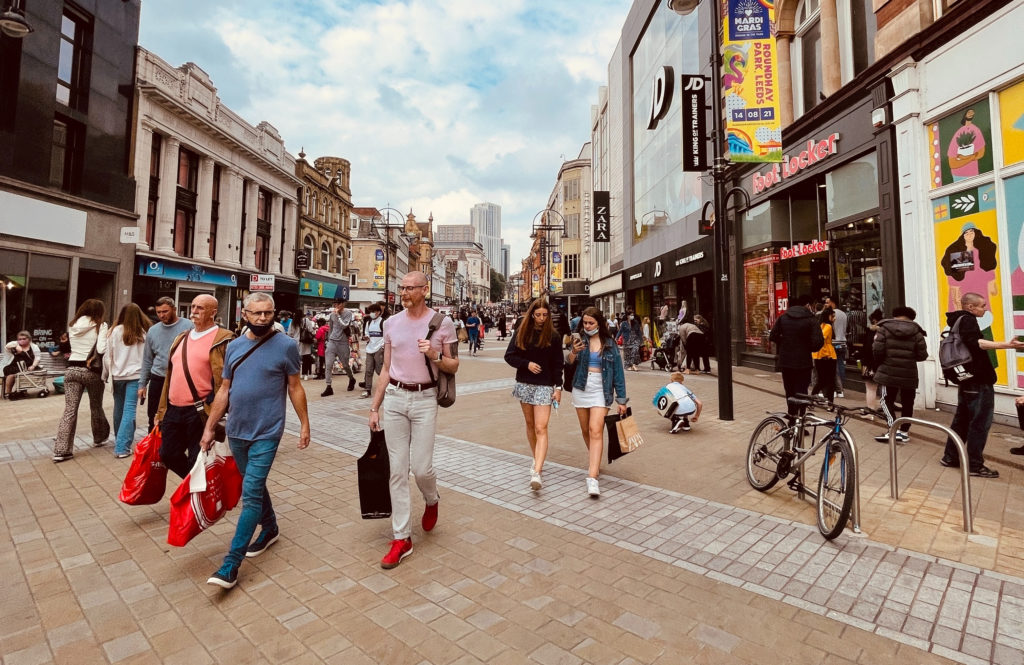By Wayne Snyder, VP Retail Strategy at Blue Yonder
The Covid-19 pandemic has shifted consumers’ shopping habits towards ecommerce and online shopping, raising fresh uncertainties over the future of the high-street. Many have assumed that the increased popularity of online shopping will mean a continued decline of high-street footfall, however, there is an argument to be made that retailers risk investing too much in their already safe online offering and neglecting the opportunity to revamp the value of their stores.
Retailers must not count the store out in 2022. There is an opportunity for retailers to reimagine the in-store experience and use it as a differentiator which caters for all customers, not just those shopping online. This, aligned with the latest technology, will help retailers to enhance their omnichannel offering.
Store vs Online
There is no denying that online shopping will continue to grow in the future – recent data from GWI revealed an overwhelming 91% of consumers estimating their online shopping will continue at the same level or increase. Consumers realised the convenience and accessibility of online shopping during lockdowns, but as restrictions lift and many return to the office, the long-term impact is still open to question.
Enter the store. While much has been commented around the need for a seamless online/offline experience, retailers must also appreciate the different reasons consumers shop each channel. Immediacy, customer service and touch-and-feel are just some advantages the physical still retains over the digital.
Grocery, for example, traditionally struggled to develop online for these reasons and even during pandemic times when that breakthrough was made, the store remained critical. Online has increased, with 33% of UK consumers purchasing groceries online in the past month in Q3 2021, compared to 25% in Q1 2020, however, the vast majority (that remaining 66%) are still turning to the physical shop for ‘little and often’ purchases. This was evident over Christmas, with in-store visits to supermarkets reaching their highest level since March 2020, even despite the rise of Omicron cases. In-store shopping demand clearly remains, but how can retailers maintain and capitalise on this?
Reimaging the store
Retailers need to understand the experiences customers want from different channels. What will be apparent as the high-street regains its standing is a greater differentiation between in-store and online experiences. Meta and Amazon are prime examples here, moving from the digital sphere and choosing to open stores for customers to experience products and witness ‘the brand’ first-hand.
The economic challenges of running a store, such as labour and renting costs, are not outweighing customer need and won’t in 2022. But cost management will be imperative. Labour challenges remain and inflationary and supply chain challenges are putting pressure on costs, so efficient utilisation of a motivated workforce, as well as management of pricing and cost control on other expenses will be key. The use of technology will also be essential to optimising retail spaces, as we’re now seeing across certain grocers like Tesco, who have reinstituted cashier-less shops.
Retailers will need to re-invent how they utilise the store in line with their digital offerings, and the store of the future may look very different. We have already seen the popularity and success of click-and-collect services, but retailers still need to make this more efficient from both a customer perspective and a supply chain perspective. Many areas need to improve such as providing real-time availability and delivery options, enabling same day or even one hour collection, drive-through pick-up, developing a smart store and enabling an easy digital shopping journey. Who knows, with the increase of virtual reality and simulation technologies, stores could be a place for customers to enter the ‘virtual brand’ world, further enhancing the digital presence but maintaining the store experience.
Immediacy of purchase, enhanced customer service and the physical experience will become a crucial distinction of the store, placing even greater emphasis on availability as well as playing a vital role in the omnichannel experience.
Enhancing the omnichannel offering
The need to provide an efficient omni-experience was evident in 2021. Those retailers who were able to scale their online businesses thrived amid continued disruption, and as we move through the pandemic, creating the seamless experience between in-store and online is a must.
Retailers are grappling with the evaluation and establishment of the right network across a blend of large warehouses, smaller localised fulfilment centres and deliveries from stores. The need is for these to be inter-operable with intelligent decision-making as to how best to move products from anywhere to anywhere. With customer expectations only getting higher, and with new priorities such as sustainability coming to the fore, retailers must be able to respond efficiently to meet these needs in a profitable manner.
To enable this, artificial intelligence (AI) is driving better forecasting and order decisions to ensure that products are at the right place to allow shoppers to buy from wherever, whenever. Robotics and IoT are driving efficiencies in the warehouse. Autonomous and electric vehicles will transform the last-mile, where visibility and tracking is key to enable more efficient deliveries and better communication with customers. These customers want to understand real-time availability and delivery – or collection – options as they shop, to choose for themselves which omnichannel experience best fits with their schedule and requirements. This requires a seamless supply chain, involving AI tools analysing millions of data points in real-time to optimise efficiency and decision making.
In 2022, the focus for retailers will be reaching this omnichannel nirvana. Consumer behaviour is changing, the store is evolving and the retail industry is at a turning point. Technology will play a critical role in improving customer convenience amid heightening demands within the industry. Strengthening both the digital and in-store offering will be key for retailers to meet all the needs of the customer and, ultimately, thrive in 2022.










